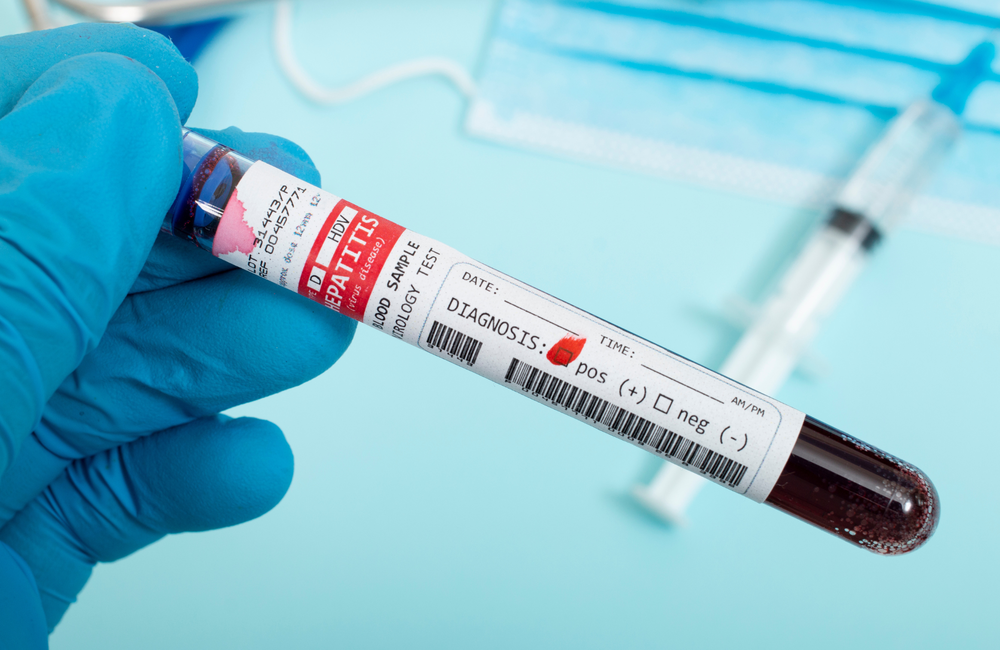
One in two people with HIV and hepatitis B with a history of injecting drug use had coinfection with hepatitis delta, a virus that depends on hepatitis B to replicate and leads to far worse liver disease outcomes, an analysis of people living with HIV in Europe has found.
Hepatitis delta levels in other groups of people with HIV matched those in the general population, the study reported. The findings are published in the journal Liver International.
Hepatitis delta (hepatitis D) is a defective virus that can only replicate in the presence of hepatitis B virus. It uses hepatitis B surface antigen proteins to assemble new viruses. As hepatitis B surface antigen is difficult to clear with hepatitis B antiviral treatments, current treatments for hepatitis B do not suppress hepatitis D. A new antiviral, bulevirtide (Hepcludex), has been shown to suppress hepatitis D replication in between half and two-thirds of those treated.
Diagnosing and treating hepatitis D is critical because the virus greatly increases the risk of severe liver damage or liver cancer (hepatocellular carcinoma) in people with hepatitis B.
Studies in North America have found that between 5% and 22% of people with hepatitis B have hepatitis D too, but the prevalence of hepatitis D in people with HIV and hepatitis B coinfection is unclear.
To establish a clearer picture of hepatitis D prevalence in people with HIV in Europe, researchers from the Swiss HIV Cohort study and the EuroSIDA cohort study pooled data on people with HIV who had tested positive for hepatitis B surface antigen between 1988 and 2019.
They checked for previous hepatitis D testing results and tested stored blood samples when people had not been tested, and calculated the prevalence of hepatitis D by HIV exposure category and European region. They also calculated the relative risks of death and liver-related death in people with hepatitis D compared to other people with hepatitis B and HIV.
A total of 2,793 people with HIV in the two cohorts tested positive for hepatitis B surface antigen, indicating chronic infection with hepatitis B. Hepatitis D status was ascertained for 1,556 people (56% of those with hepatitis B).
Overall, 15% of those with hepatitis B and HIV tested positive for hepatitis D antibody. The rate was the same in the EuroSIDA and Swiss HIV cohorts.
However, among people who acquired HIV through injecting drug use, half of those with hepatitis B had hepatitis D coinfection and the rate of coinfection was similar in northwestern, southern and eastern Europe.
In other participants with HIV and hepatitis B, the coinfection rate was just under 5% (4.7%). The coinfection rate was higher in southern Europe (8%) than other regions (3 – 4%), in line with hepatitis D prevalence in the general population.
Just under two-thirds (65%) of those with hepatitis D antibodies had replicating hepatitis D, indicating a need for treatment. This proportion did not differ between HIV exposure categories.
" Just under two-thirds of those with hepatitis D antibodies had replicating hepatitis D, indicating a need for treatment."
People with hepatitis D were more likely to have hepatitis C antibodies (75% vs 24%), had higher liver enzyme (ALT) levels (50 vs 32 IU/ml) and lower thrombocyte levels (indicating a higher risk of thrombocytopenia, a complication of advanced liver disease).
The investigators looked at the outcomes of people with hepatitis D coinfection compared to the rest of the cohort, during a median follow-up period of 10.8 years.
People with hepatitis D were significantly more likely to die during the follow-up period (34% vs 20%, p< 0.001) and the cause of death was more likely to be liver-related (41% vs 17%). People with hepatitis D developed liver cancer more often (5.8% vs 1.6%). Multivariable analysis showed that active hepatitis D replication was associated with an increased risk of death during follow-up (adjusted hazard ratio 1.8), liver-related death (aHR 3.1) and hepatocellular carcinoma (aHR 8.3).
The study investigators say their results underline the importance of testing everyone who is hepatitis B surface antigen-positive for hepatitis D. In the Swiss cohort, only 59% of 829 people starting antiretroviral treatment had been tested for hepatitis D. The authors say that people with hepatitis D should be followed closely to monitor for hepatocellular carcinoma. Although treatment for hepatitis delta is now available, it is less effective than antiviral treatments for hepatitis B or C and prevention of hepatitis B infection through vaccination. Harm reduction measures including needle and syringe programmes will remain essential, they conclude.
Béguelin C et al. Hepatitis delta infection among persons living with HIV in Europe. Liver International, published online 10 January 2023.
DOI: https://doi.org/10.1111/liv.15519
Correction: This article was amended on 31 January 2023 to correct the name of the journal the study was published in.
